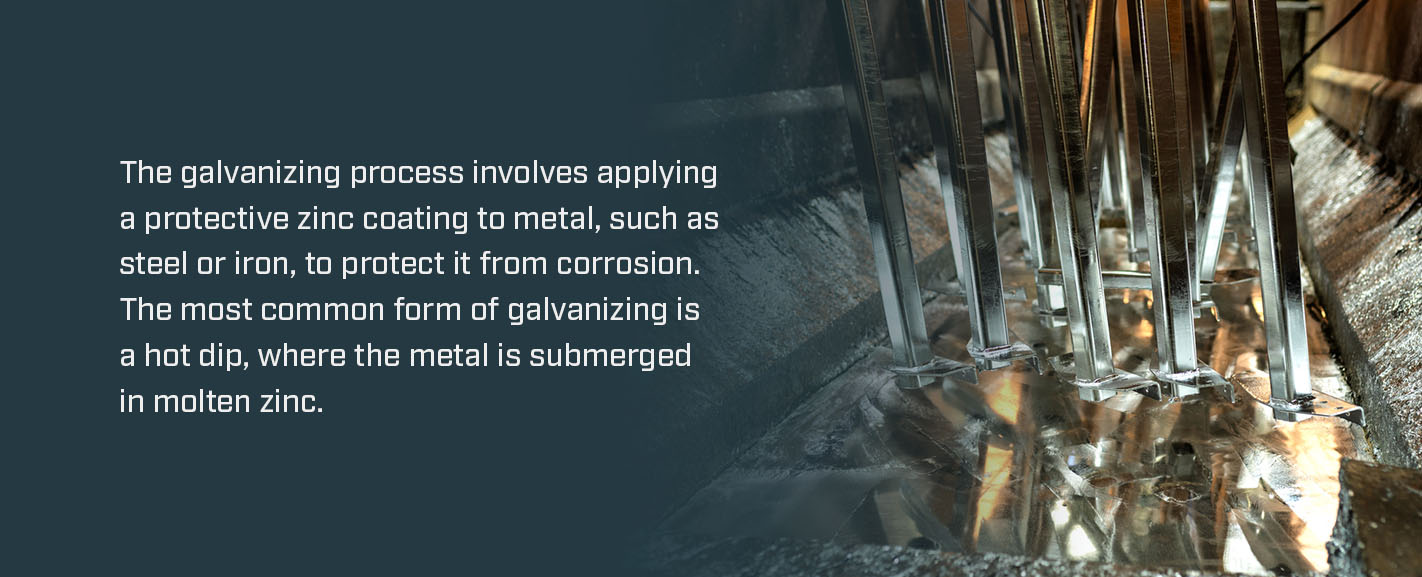
Galvanizing and anodizing are two separate processes used to treat metal. The anodizing process involves oxidizing the outer layer of metals and increasing their resistance to everyday wear. In contrast, the galvanizing process deposits a layer of zinc to protect metals from rusting.
Learning the difference between galvanizing and anodizing can help you choose the proper method for your preferred result. There are many benefits to galvanizing or anodizing steel, aluminum and other metals.
The anodizing process increases the thickness of the metal’s natural oxide layer to increase its durability. There are various types of anodizing depending on the acid used in the process. While different metals can be anodized, including magnesium, zinc and titanium, aluminum is the most common.
The aluminum anodizing process involves the following:
In terms of appearance, the effects of anodizing are impressive and provide a permanent finish. Compared to other finishes, like paint and powder coating, anodized finishes won’t require touchups thanks to superior bonding and adhesion. Anodized metal is also considered environmentally safe, producing few, if any, harmful effects on land, water or air.

The galvanizing process involves applying a protective zinc coating to metal, such as steel or iron, to protect it from corrosion. The most common form of galvanizing is a hot dip, where the metal is submerged in molten zinc. The process typically takes place after a product has been manufactured to ensure the coating protects all edges of the material.
The hot-dip galvanizing process involves three main steps:
While zinc is already remarkably resistant to corrosion, its electrochemical reaction to steel makes it less likely to rust. The zinc coating can repair itself because the battery effect replates minor scratches and dings. As a result, galvanizing can help prolong the service life of metal pieces.
There are numerous uses and benefits of galvanizing or anodizing metal. The difference between galvanizing and anodizing is in the process. While both methods involve treating metals to make them more durable, anodizing is an electrochemical process, and galvanizing involves coating metals with zinc.
Therefore, anodizing is often used to give surfaces a decorate, durable finish, while galvanizing is ideal for preventing rust.
Anodized metal has many uses in consumer, industrial and commercial products, as they offer minimum maintenance and durability. Anodized metals are hard, solid and weather resistant. The anodizing coating ensures metal can’t peel or flake, increases adhesion for paint and primers and allows you to add colors during the anodizing process, making it durable for metal coloring.
Anodized metal is used in roofs, ceilings, floors, curtain walls, escalators, staircases and lobbies in commercial buildings worldwide. These metals are also used in computer hardware construction, exhibit displays at trade shows, scientific instruments, various home appliances, consumer products and building materials.
Galvanized steel is all around us in various industries, from agriculture to oil and gas to sports and leisure. It plays a vital role in bridges, buildings, facades and gates and is even used to create corrosion-resistant nuts, bolts and nails. In outdoor projects, you’ll typically notice galvanized steel in outdoor pipes where plastic piping isn’t strong enough.
Galvanized steel is famous for its formability and protection from corrosion due to its zinc-iron coating. The sacrificial nature of the coating results in a long-lasting, high-quality metal product.
It’s popular in the solar and wind industries due to its environmental friendliness. In agriculture, equipment is more prone to corrosion, creating a demand for resilient equipment. As a result, galvanized steel is often used to provide protection from corrosion that can last decades, even when exposed to harsh environments.
In construction, galvanized steel has been used for over a century in residential and commercial properties. It’s also selected due to its appearance. The shine from galvanized steel provides a contemporary look suited for modern architectural designs. You might notice galvanized steel in bus stop benches, balconies, staircases, verandahs, ladders and walkways.
Anodizing converts metal surfaces into a decorative, durable, corrosion-resistant finish, while galvanizing coats metal surfaces with zinc to prevent them from rust. Both processes offer benefits for metal pieces.
When you’re looking for galvanizing services, PBZ Manufacturing has you covered. We’re a one-stop shop for individual engineering, manufacturing, finishing, assembling and shipping services. We’ll connect you with reliable third-party galvanizing companies to complete your project successfully.
We’ll oversee all steps of your project, from initial design to shipping. Our resourceful manufacturing removes layers from your supply chain, reducing project completion timeline and manufacturing costs.
Contact us today to get started.